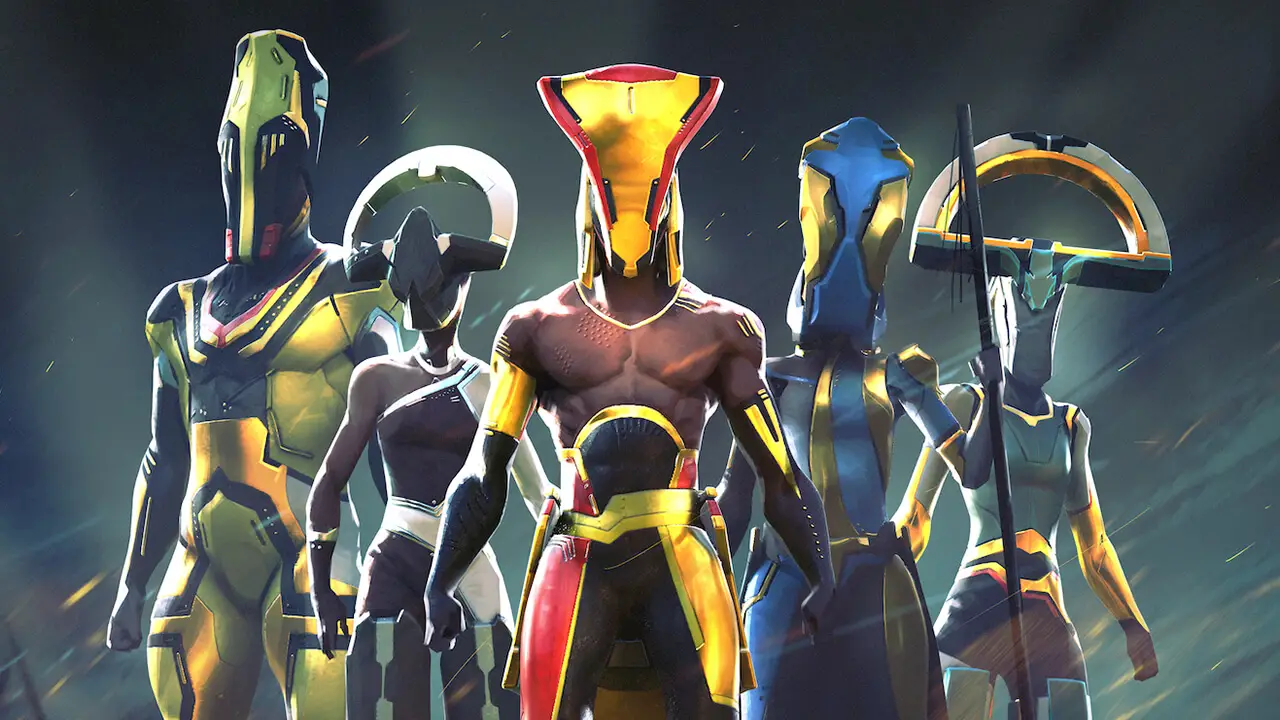We are the Caretakers is a grand strategy JRPG with RTS exploration and turn-based combat, presented in a very unique, afrofuturistic look. Players lead a group of Caretakers into battle, always confronted with the task of protecting the local wildlife in the form of Raun. These creatures, resembling some kind of rhinoceroses, give literal power to the land. They are poached for their horns, but your tasks will rapidly evolve from simply wildlife rangers to global defenders.
Whilst the aforementioned mixture sounds pretty intriguing, it might be wise to first shine a light on what could otherwise be called a little surprising.
The big raun in the room
If you’re looking for firsthand information on We are the Caretakers, chances are you’ve read a different explanation for every place you’ve looked into. My introduction uses the information given on Twitter, which I also find fitting best. However, WatC does itself no favor by comparing to such a vast array of games like X-Com, Darkest Dungeon, Final Fantasy and Ogre Battle. If you know the last one mentioned, you could be slightly familiar with what to expect but let’s narrow it down.
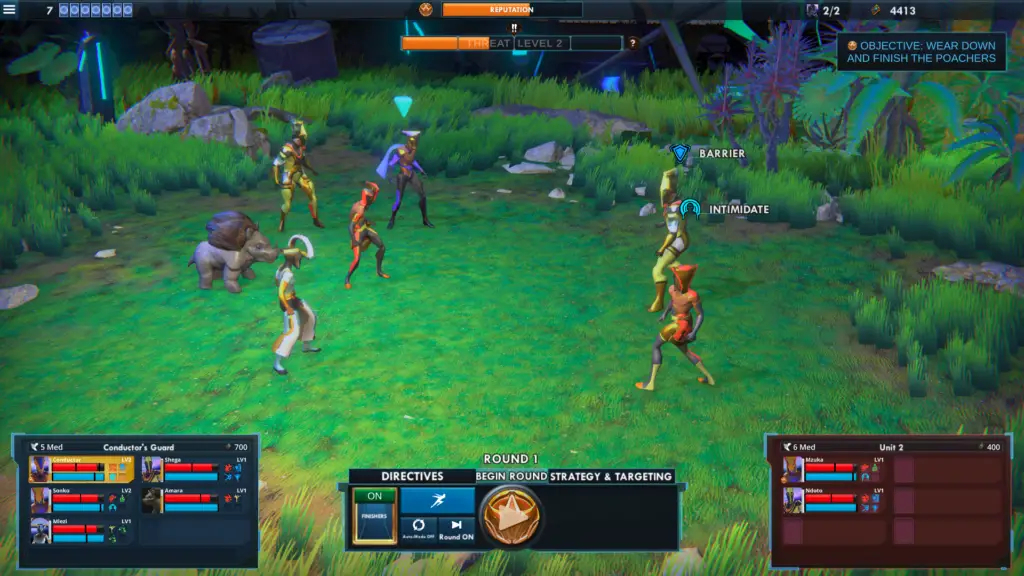
We are the Caretakers offers a single-player campaign with a very linear storyline that takes around 23 missions to conclude. I’m saying conclude, not unfold, because it’s not like you have to put in a lot of guesswork to see where things might head on storywise, very early on. We’ll talk about this later. Now, the gameplay consists of you, putting together a unit of 6 caretakers maximum, and sending them out into different missions. You can lead as many as nine different units into combat, as long as you have enough credits. Movement is done in rts-mode but whenever you hit an enemy, the battle screen appears, and you’re greeted with two parties facing each other.
It’s very obvious that combat resolves around your standard JRPG-turn-based battles, but with a slight twist. Instead of hit and mana points, everyone on the field uses Stamina and Willpower. Moving on the map also costs stamina, so aimlessly running around before entering a fight is already giving you a disadvantage. Luckily, it also affects roaming enemy units. Using different abilities to either deplete stamina or willpower will surely move the bars to zero, but it is not over yet. Combatants need to be finished off by special moves, conveniently called Finishers. You can bribe, recruit, detain or kill – the choice is up to you. However, there might be consequences involved.
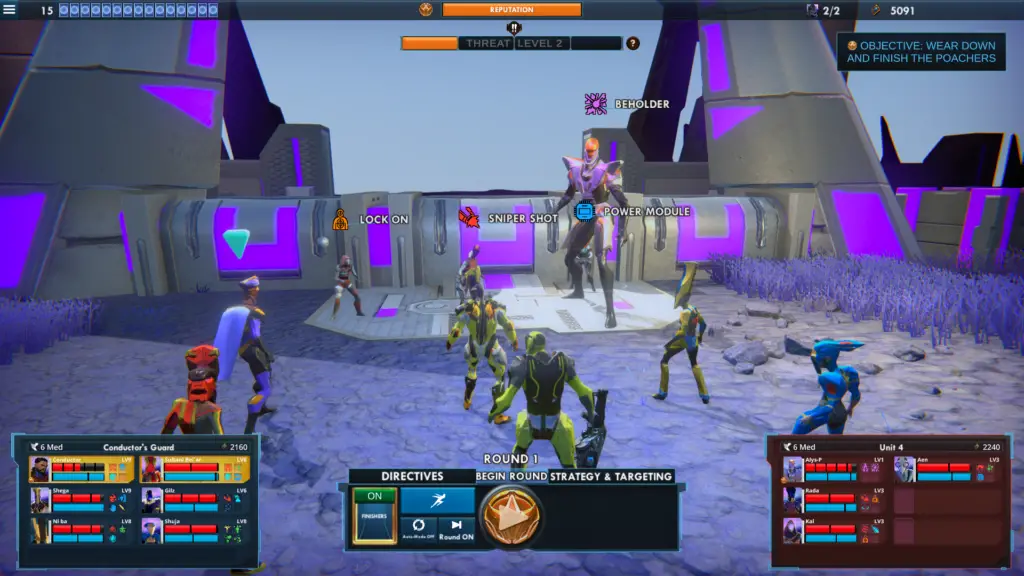
There is another system in place, called Reputation. Think of it as the flame in Darkest Dungeon with slightly changed attributes. If your reputation is high, you get recruits more often and at a higher level. These always appear after you finish a mission, in a place called the Atrium, and can be recruited for free. A high reputation also raises the taxes you collect from towns whilst on a mission but lowers the damage you dish out. This means that always being the good guy might be problematic and should force you into some inner struggles because dealing more damage simplifies combat. At least that’s the theory, however, the actual game never forced me to think about this a lot.
I rarely fell under a reputation of 90 and actually only had one boss fight that made me rethink my configuration. I didn’t solve this with my reputation but by changing the unit setup. In any regular JRPG or tactical game like Darkest Dungeon, you can find some sort of archetypes and special roles. Around 30 job classes with unique setups as judges or hackers, as well as your plain old healer, are there at your disposal. Balancing them is a tough act, and frankly, it didn’t always work out. I referred to some “meta-like” tactics rather quick, with some abilities simply offering way more power or utility.
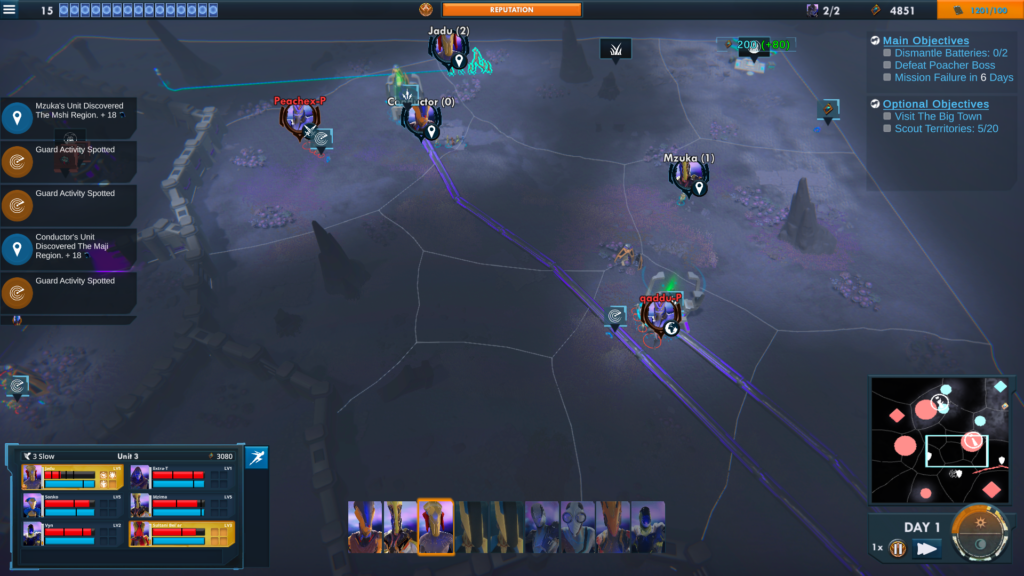
Overall, all systems in place were just a bit too much to feel important on their own. Combat became very easy, very early, and I urge everybody, who has even remotely played a JRPG or anything strategic, to start the game on hard difficulty.
Unique style and sound
Calling the look special would be quite an understatement. The Afrofuturism feels fresh, unique, and so underutilized in many games. Your caretakers will often make you feel like playing an unknown turn-based relative of Warframe, with their overstylized helmets and flashy color palette. I can’t really say the same about the rather basic effects in combat, but they’ll do the trick nonetheless. The map looks blurry, and the UI gives some sort of mobile game vibe. However, I really think lots of work went into the overall aesthetics.
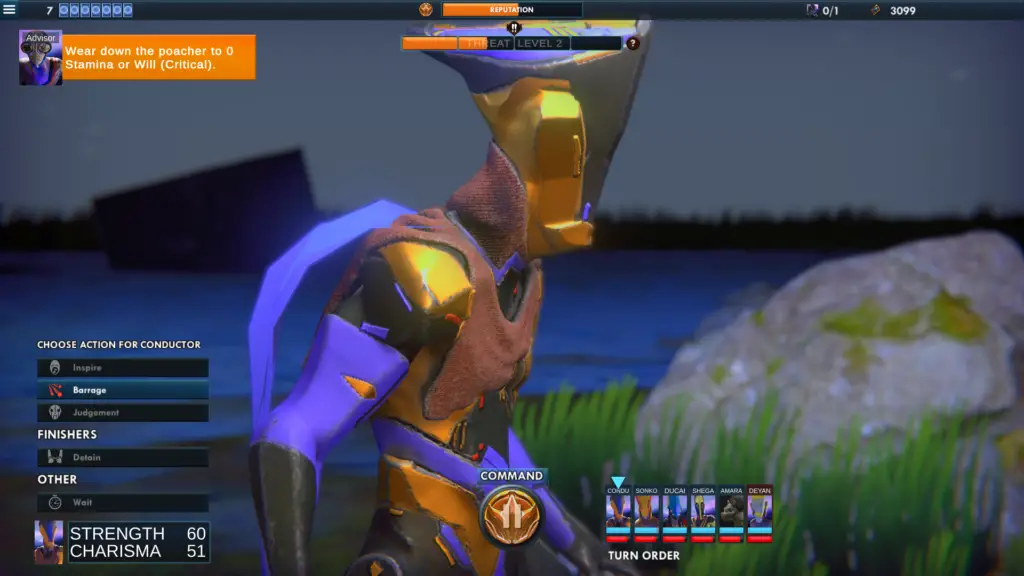
Even more so when it comes to music and sound, when you’re booting up the game, take your time and listen to this beautiful track with its dark and moody synths that seem to emulate traditional folklore melodies. I also enjoyed the battle tune whenever it came up, even though combat felt tiring at some point.
An overly ambitious storyline
I finished We are the Caretakers, in big parts due to its story. This doesn’t mean it is that great, but it had the potential to be just that. There were some early beats in the plot that made me suspiciously aware of what might come in the end. However, without spoiling anything, I still was interested to see how things might unfold. Your quest evolves from becoming wildlife park rangers to defenders on a global scale, not without touching extraterrestrials as well. At times it felt just too much. Too much for a game of this size and this complexity.
It felt like the story couldn’t breathe and was pushed from event to event or era to era, as the chapters are called in-game. There are 4 of them, and if you ask me, I would have expected more to come. It also didn’t help that the presentation felt lacking and not immersive. I don’t expect an indie game to present fully voiced and animated cutscenes, but putting in more context for players, maybe with the help of unique and interesting sub-quests, I’d forget the ending and the instant dissatisfaction it brought with it.
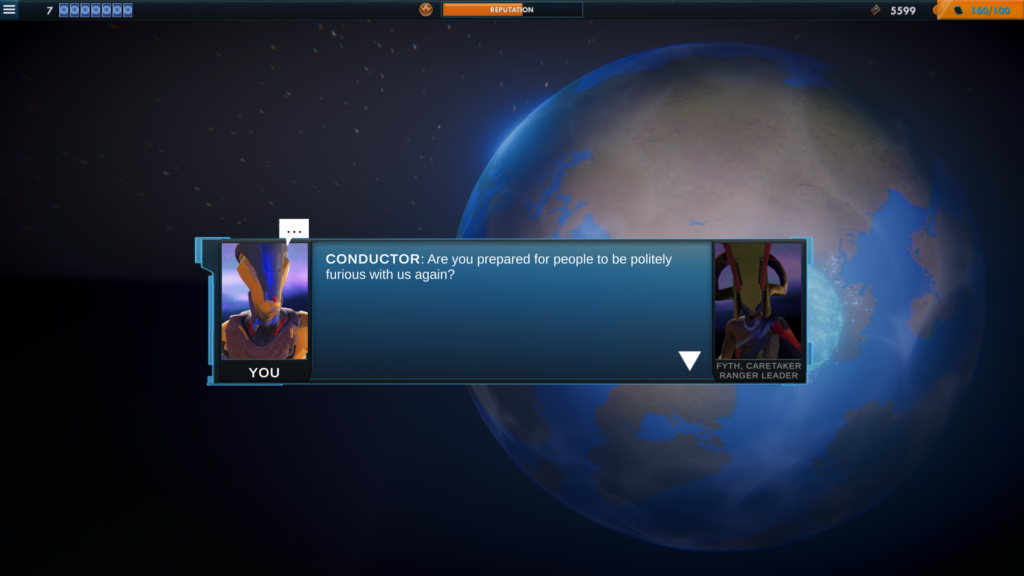
At one point, you realize just how long you’ve kept yourself, and your country shielded from outsiders. Why, I kept asking myself. The answer to that fell in a short sub-clause and was never explored further. I’d loved to know more about this instead of another “visit the big city and kill 3/3 poachers”-mission. The reasons for these and other shortcomings I mentioned earlier might be rooted in unsuccessful early access.
Silent Early Access
We are the Caretakers never got the attention it deserved. This is the painful truth for many indie games but it could have changed a lot for WatC. I read a couple of comments, talking about how the game was rushed out in the end, due to the lack of interest. Whilst I don’t know the truth behind these words and actually read a statement from one of the devs that they did everything they could, I at least felt the same once the 4th and last era started. For a chapter that should be putting together the pieces laid out, it just felt too cut off. Also, it was riddled with a couple of nasty bugs I didn’t have to deal with in earlier eras of the game.
Now, bugs are part of every game but these were sometimes so easy to reproduce that I wouldn’t need my background in Quality Assurance to make them happen. Since there is no way to save between missions, any blocker that occurs means that you have to redo the whole mission. If that happens to you four times in the final mission, things tend to become a bit unpleasant. I’m sure that Heartshaped Games did their best to find and squash those nasty beetles but era four saw me not fighting against the inevitable antagonist but my own stamina that was cut in half, every time I had to restart.
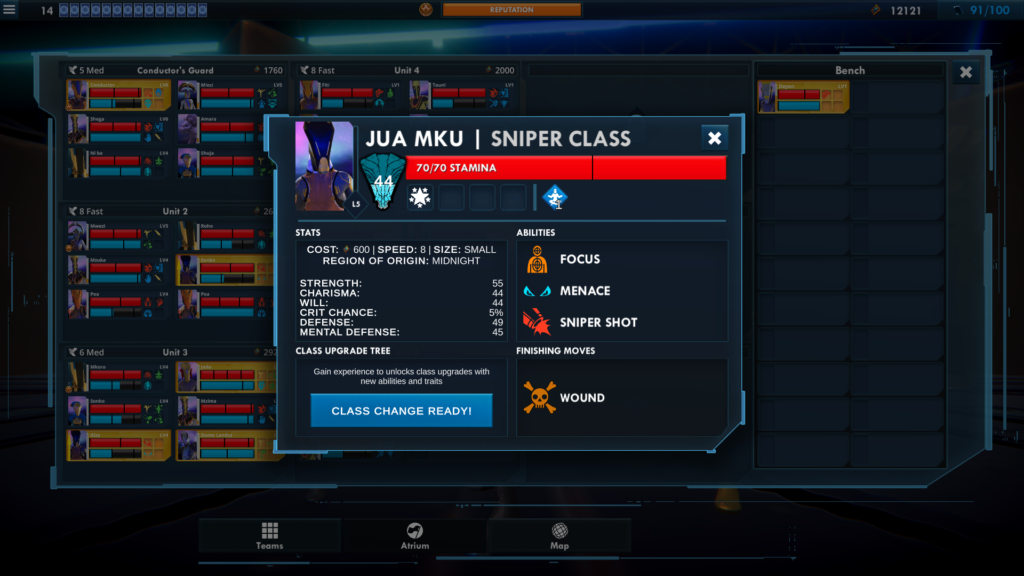
Speaking about cut in half – some of the abilities that can be encountered around the middle of the game feel too unbalanced. Skills that cut Stamina and Willpower started to become staples in all of my groups. Even if only the first hit should be viable on paper, one has to take into account that you neglect any armor or other resistance present. I left out so many interesting support classes which brought “nothing” to the board as helpful as raw, chunky damage. A dead enemy can’t hit you, so who needs a healer anyway?
Conclusion
If you found lots of bitterness oozing between these lines, then only because I was really disappointed with how nearly every aspect of the game turned out to be less fun than it could be, giving up on so much potential. Even the small Raun that was added to my group didn’t feel special because their skills were lacking so much that I removed them as soon as the game allowed it. They are called Amara, and I truly liked them, but they were more useful watching from the sideline.
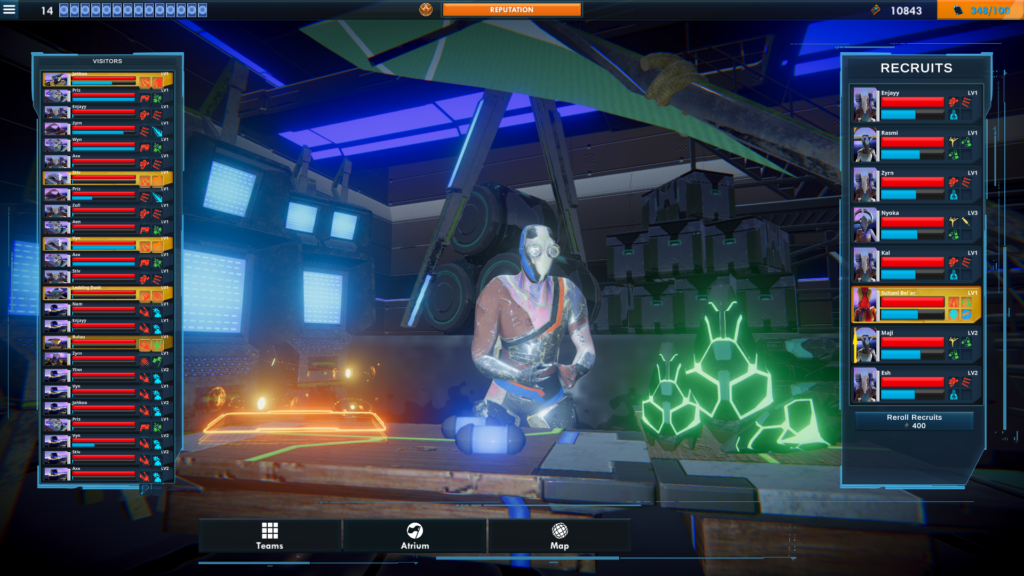
Is We are the Caretakers a good game? I think so, yes. In many parts. It gets buggy and feels cut off, the closer you get to the end, but I still pushed through to see how the story unfolds. Could it have been a great game? Maybe. With more valuable feedback or the decisions to cut some of the complex systems in charge. You find people complaining about how they don’t know what this game is really about and I understand why. It is not a grand strategy title but a JRPG with okayish combat that uses a unique art style with some RTS map mechanics added on top.
Knowing this, you should give this game a chance; the look and sound really make it feel very different from anything I’ve ever played so far. I also hope that Heartshaped Games would improve on this game, decide to streamline where necessary but keep the valuable things untouched, double down on the story or make it even flatter in favor of improved strategic gameplay.
Developer: Heartshaped Games
Publisher: Heartshaped Games
Released in Early Access: 23.04.2021
Full Release: 06.01.2023
Price: 16.79 €


